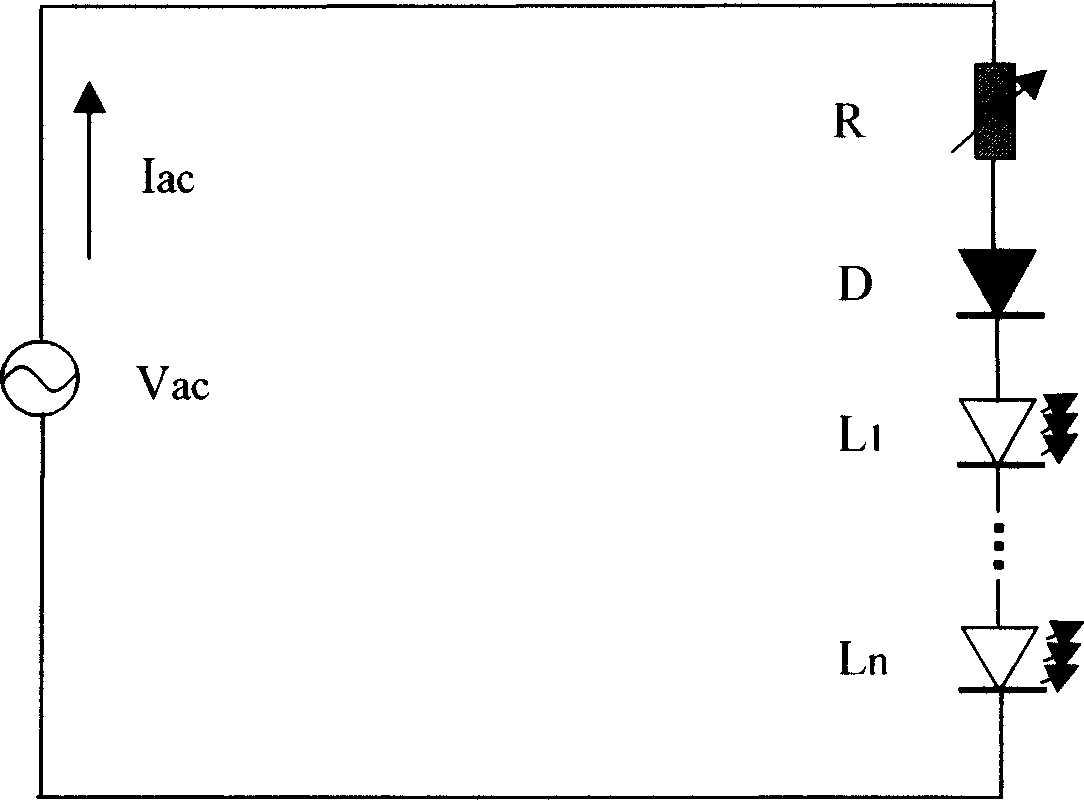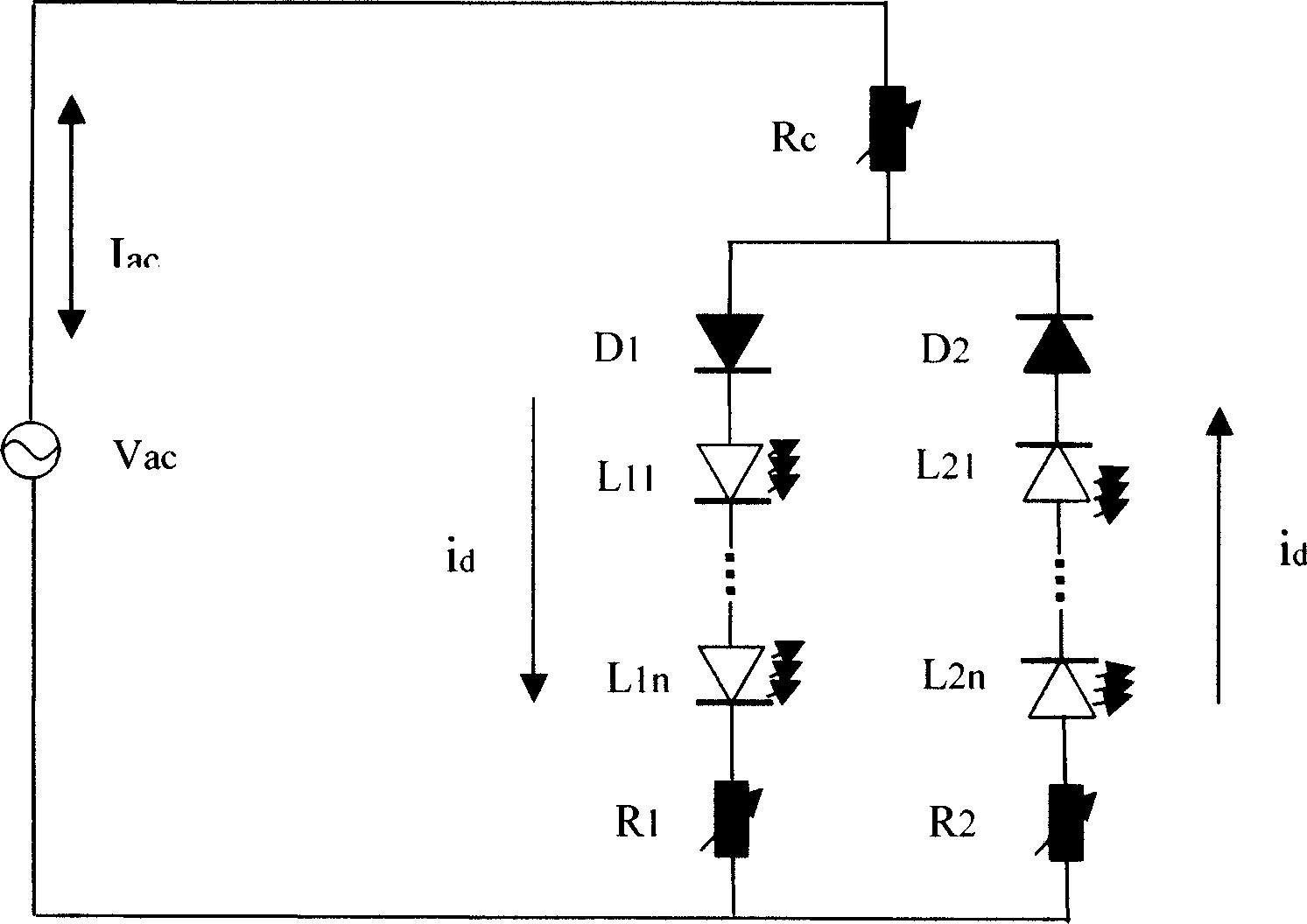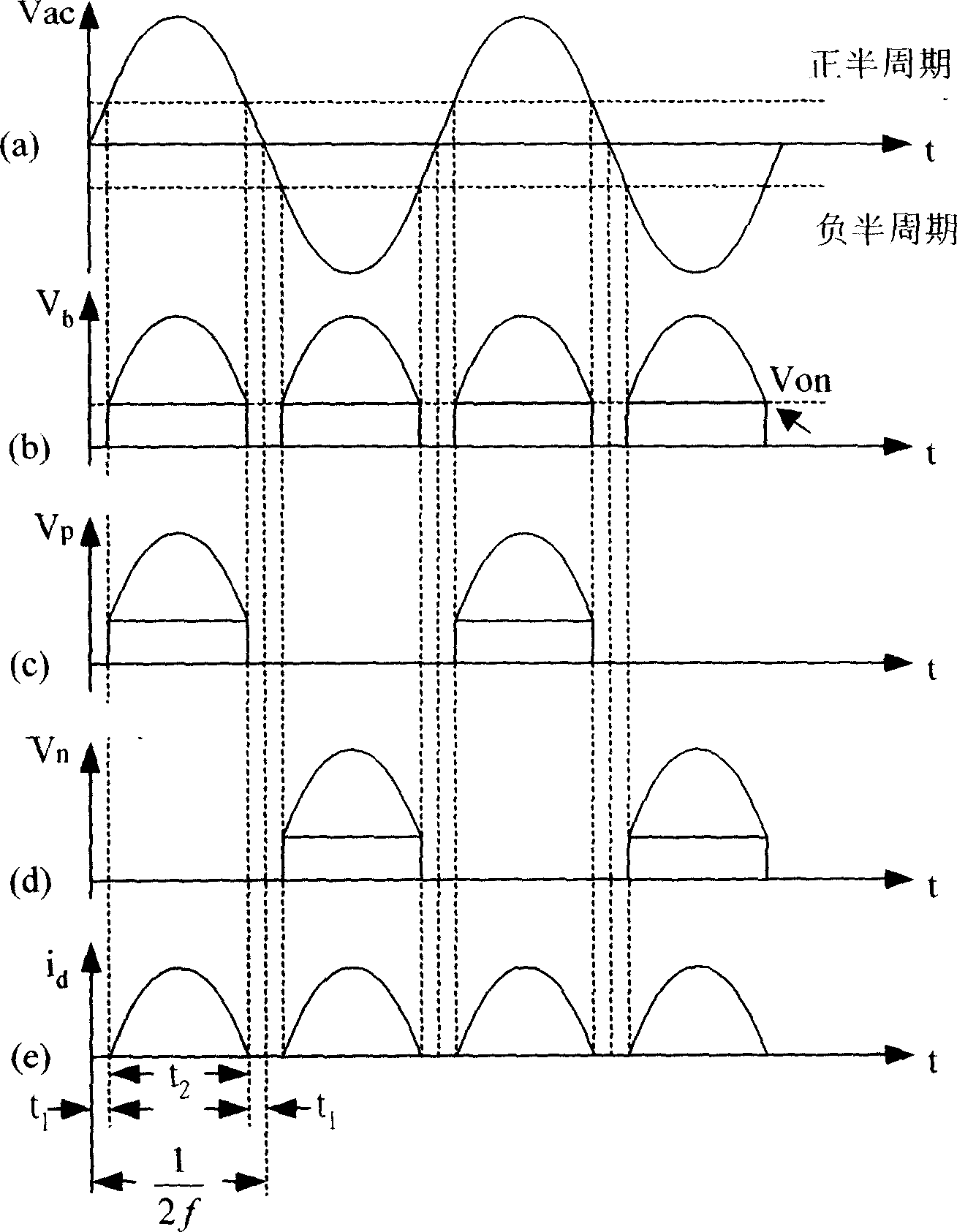Alternative current directly driving light emitting diode lighting device
A technology for light-emitting diodes and lighting devices, which is applied to lighting devices, lighting device parts, electric light sources, etc., can solve the problems of high production cost, power consumption, and complicated circuits, and achieves reduction of production costs, improvement of conversion efficiency, and solutions to Effects of heat dissipation problems
- Summary
- Abstract
- Description
- Claims
- Application Information
AI Technical Summary
Problems solved by technology
Method used
Image
Examples
Embodiment 1
[0025] figure 1 Demonstrates the basic circuit of LED lighting technology directly driven by alternating current (AC), V ac R is an AC power supply; R is a resistor; D is a diode; L is a light-emitting diode, and multiple light-emitting diodes are distinguished by serial numbers L1, L2, ..., Ln. The diode D is used to prevent damage to the light-emitting diode by alternating current negative voltage and electrostatic discharge (ESD), protect the light-emitting diode, and ensure the stability of the light-emitting diode lighting device directly driven by alternating current. The diode D can also be a light-emitting diode capable of resisting negative pressure or electrostatic discharge (ESD). The light-emitting diodes of ESD) can be simultaneously regarded as the diodes D which play a protective role as defined in the present invention.
[0026] According to the requirement of brightness, a series of LEDs L1-Ln can be connected in series, and LEDs of different colors can be u...
Embodiment 2
[0029] because figure 1 The medium light-emitting diodes (L1~Ln) only work in the half-cycle of the alternating current. For general daily alternating-current power supply, the change of the illumination intensity of the light-emitting diodes may produce a feeling of light flicker to the eyes. To alleviate or eliminate this problem, figure 2 Demonstrated a method to make two sets of LEDs alternately emit light during the positive and negative half cycles of alternating current. figure 2A group of light emitting diodes connected with diode D1 is marked as branch D1, and a group of light emitting diodes connected with diode D2 is marked as branch D2. The diodes and light-emitting diodes on the D1 branch are opposite in polarity to the diodes and light-emitting diodes on the D2 branch. Therefore, when driven by the alternating current positive voltage cycle, a group of light emitting diodes on the D1 branch emit light, and a group of light emitting diodes on the D2 branch are...
Embodiment 3
[0049] if figure 1 in or figure 2 If a light-emitting diode on the D1 or D2 branch of the middle branch fails, the light-emitting diodes on the whole branch will be in the off state. To avoid this situation, we need to increase the fail-safe capability of the circuit. actually, figure 2 The demonstrated circuit already has some failsafe capabilities. If one branch fails, the other normal branch will continue to work. Figure 4 An example of improved fail-safety is demonstrated. figure 1 and figure 2 Each LED demonstrated in the Figure 4 A unit composed of multiple light-emitting diodes connected in series and parallel can be replaced. Figure 4 Also introduced the use of Zener (Zener) diode fail-safe technology. When a light-emitting diode unit connected in parallel with the Zener diode ZD fails and causes an open circuit, the Zener diode will be turned on to ensure that other light-emitting diode units connected in series in the branch continue to work. But wheth...
PUM
 Login to View More
Login to View More Abstract
Description
Claims
Application Information
 Login to View More
Login to View More - R&D
- Intellectual Property
- Life Sciences
- Materials
- Tech Scout
- Unparalleled Data Quality
- Higher Quality Content
- 60% Fewer Hallucinations
Browse by: Latest US Patents, China's latest patents, Technical Efficacy Thesaurus, Application Domain, Technology Topic, Popular Technical Reports.
© 2025 PatSnap. All rights reserved.Legal|Privacy policy|Modern Slavery Act Transparency Statement|Sitemap|About US| Contact US: help@patsnap.com



